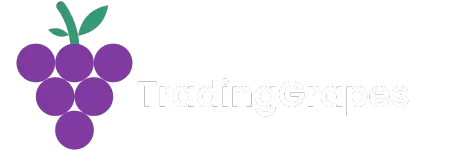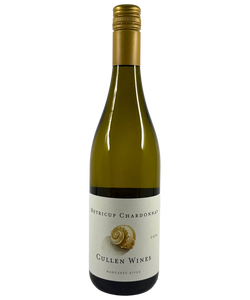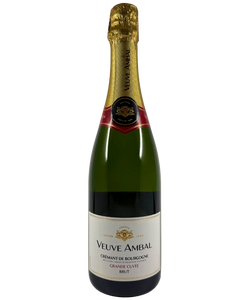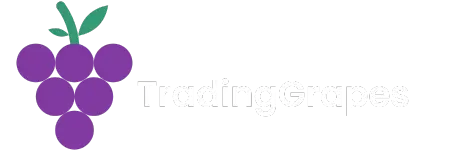If there’s one thing I love about Chardonnay, it’s that it can be a chameleon. Same grape, wildly different outcomes depending on where it’s grown and how it’s made.
In my book, there are two main camps of Chardonnay: those that go through malolactic fermentation (malo, if we’re on friendly terms) and those that don’t. On one side, you’ve got plush, creamy, butter-kissed wines. On the other, racy, citrus-driven wines with a crisp, mineral edge. Both have their place — and a winemaker’s choice on this front says a lot about their style.
The 2024 Dappled Appellation Chardonnay? It sits in that rare, happy middle ground.
Malo or no malo — and what it means for your glass
First, a quick refresher. Malolactic fermentation is the process where sharper malic acid (the acid found in green apples) is converted into softer lactic acid (the acid found in milk). The result? A shift from tart, linear acidity to a softer, rounder texture. You might also get flavour notes like butter, cream, or even a faint nuttiness.
Some winemakers actively encourage malo to achieve a richer style (think classic Californian Chard). Others block it completely to preserve freshness and tension (think Chablis).
Dappled doesn’t push it either way — they let nature decide. In 2024, the temperatures in barrel were warm enough to bring on partial malo, creating just enough creaminess to balance the wine’s lively acidity. The result is a Chardonnay that’s not shouting butter or acid, but speaking in perfect harmony.
Wild vs commercial yeast
Another stylistic choice with big flavour consequences is yeast. Many wineries opt for commercial yeast strains because they’re predictable — you know what flavours you’ll get, and fermentation is less risky.
Dappled, however, uses wild (ambient) yeast, the naturally occurring strains on the grape skins and floating around the vineyard. It’s a more hands-off approach that can be less predictable, but it often results in wines with greater complexity, subtle texture differences, and — most importantly — a stronger sense of place.
Think of it like baking bread with a starter you’ve nurtured at home versus using store-bought yeast. Both make bread, but the wild version has a depth and individuality you just can’t manufacture.
Oak influence
The 2024 Appellation Chardonnay spends time in a mix of old and new oak barrels. And while oak is often associated with flavour — vanilla, spice, toast — that’s not the only role it plays.
Even older barrels, which no longer impart much flavour, have a crucial function: oxygen exchange. Tiny amounts of oxygen interact with the wine as it rests, softening tannins, rounding texture, and allowing secondary flavours to develop.
In this case, the oak gives the wine subtle layers rather than dominating the palate. You might notice a whisper of nutmeg or a gentle toasty warmth, but it’s integrated, not obvious.
Lees ageing
One of my favourite topics — and one of the most transformative steps in winemaking — is lees ageing.
Lees are the dead yeast cells left behind after fermentation. There are two main types:
- Gross lees: thicker and more coarse, typically racked off (removed)
- Fine lees: silky and subtle, left in contact with the wine to build complexity and texture
As the wine ages on fine lees, the yeast cells break down in a process called yeast autolysis, adding flavours like brioche, giving savoury depth. It’s also responsible for that toasty texture you find in high-quality Chardonnay and Champagne.
For the 2024 Appellation Chardonnay, lees ageing adds that touch of warmth and savoury nuance that makes the palate so engaging — without tipping it into heaviness.
A snapshot of the vintage
2024 was a year that played into Dappled’s strengths. Balanced ripening conditions meant the fruit came in with both freshness and flavour concentration — the perfect starting point for a wine that’s all about balance. The partial malo added a touch of roundness, and the old oak barrels gave subtle complexity without overpowering the fruit.
The result? A wine that feels polished but not overworked.
The winemaker’s touch
Behind Dappled is Shaun Crinion, a winemaker with a clear vision: let the vineyard and the season speak, and intervene only when it improves balance. His approach is minimal but deliberate — using wild yeast, seasoned oak, and a gentle hand with processes like malo.
The decisions you taste in the 2024 Appellation Chardonnay — the harmony between acidity and creaminess, the subtle complexity from lees ageing, the whisper of oak — all reflect Shaun’s philosophy. This is a winemaker who knows that restraint can be just as powerful as intervention, and the result is a wine that feels effortless, even though every choice was intentional.
Tasting notes
On the nose:
Bright citrus, layered with stone fruit, and a faint toasted cashew note. There’s also a gentle savoury lift from the lees ageing, giving a complexity that invites a second (and third) sniff.
On the palate:
The first impression is freshness — pink grapefruit — but it quickly gives way to a creamy, toasty mid-palate, thanks to that partial malo and lees work. Hints of stone fruit and a light cashew nuttiness come through, finishing long and clean with a mineral edge.
It’s a wine that manages to be both refreshing and comforting — a tricky balance to get right.
Food pairing
Because it has that interplay between freshness and creaminess, this Chardonnay is versatile at the table.
-
For freshness: Pair it with oysters, sashimi, or grilled prawns with lemon and olive oil.
-
For creaminess: Try it alongside roast chicken with a light pan sauce, creamy pasta with mushrooms, or a soft cheese like brie.
Its balance means it can handle both the brightness of seafood and the richness of dairy or butter-based dishes.
Why it’s exceptional value
The 2024 Dappled Appellation Chardonnay is, quite frankly, punching well above its price point. It offers the kind of winemaking detail and balance you’d expect in a far more expensive wine. Wild yeast, old oak, careful lees ageing, partial malo — these are all choices that require more work and attention, and you can taste that effort in the glass.
For collectors, it’s the kind of bottle you can confidently buy by the case for drinking over the next few years. For casual drinkers, it’s an accessible gateway into understanding why Chardonnay inspires so much passion among winemakers and wine lovers alike.
Final sip
Whether you’re firmly in the malo camp, the no-malo camp, or you just love Chardonnay in all its forms, the 2024 Dappled Appellation Chardonnay is a masterclass in balance. It’s proof that when you combine great fruit, thoughtful winemaking, and a willingness to let the vintage speak, you can create something truly special — and still keep it accessible.
If you’ve ever wanted to taste the sweet spot between acidity and creaminess, between freshness and texture, this is it.











